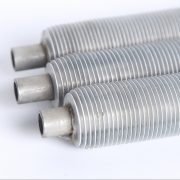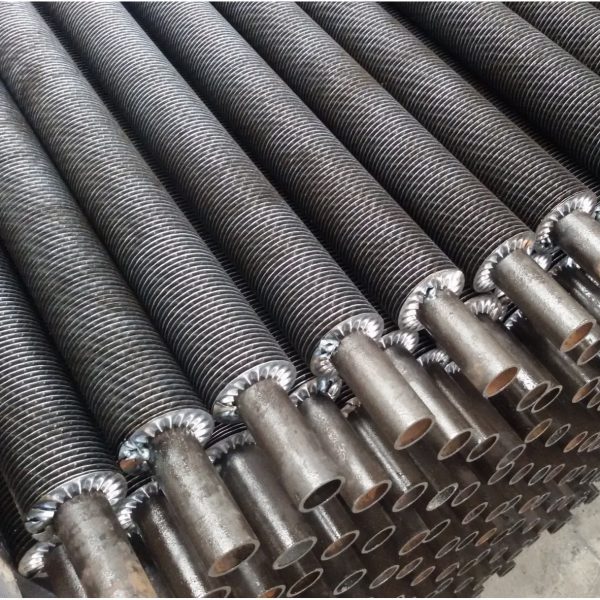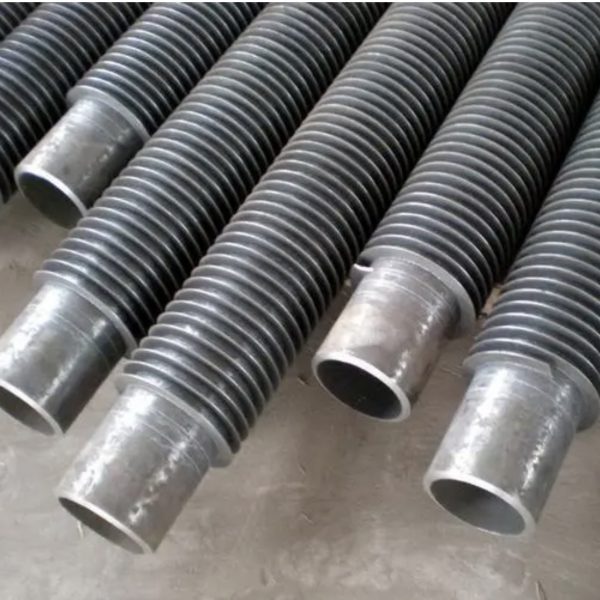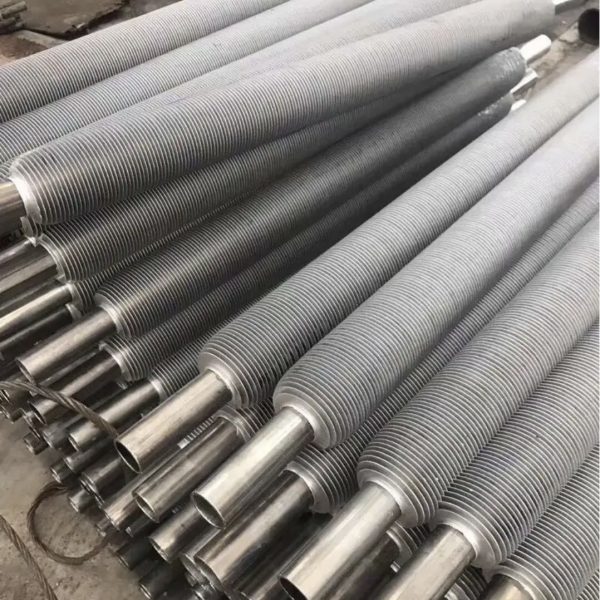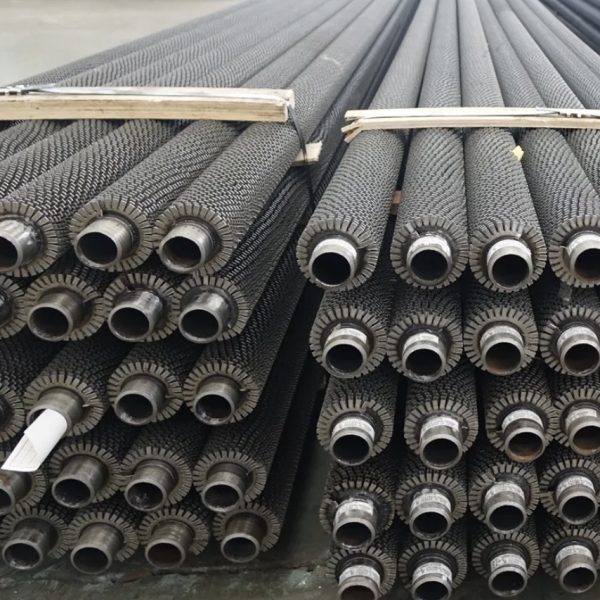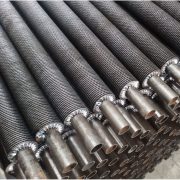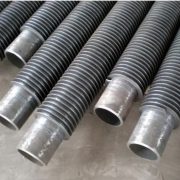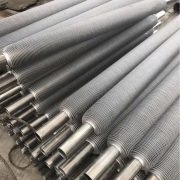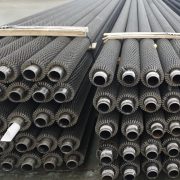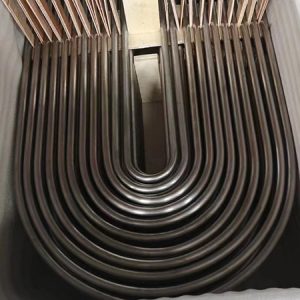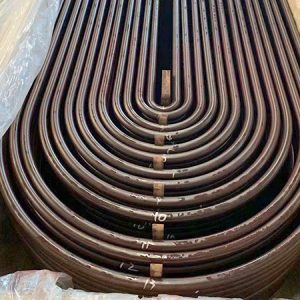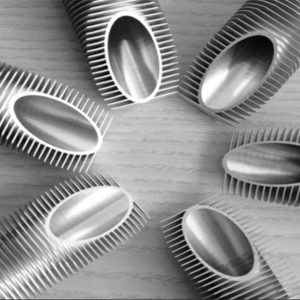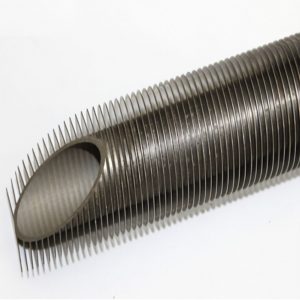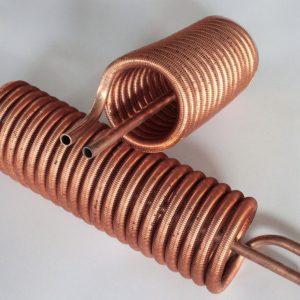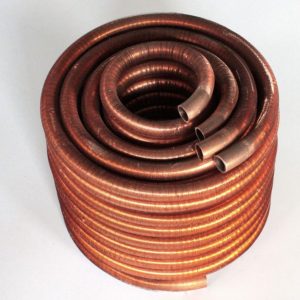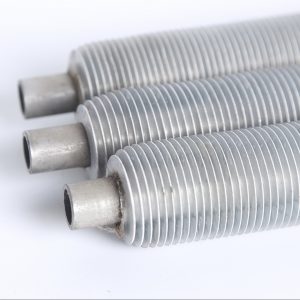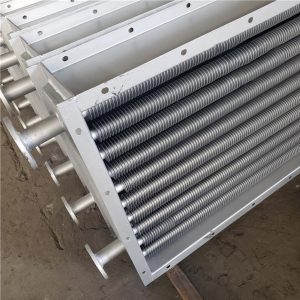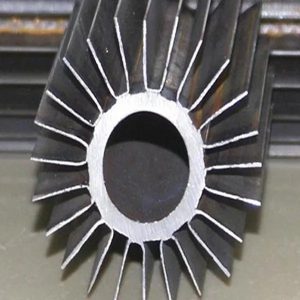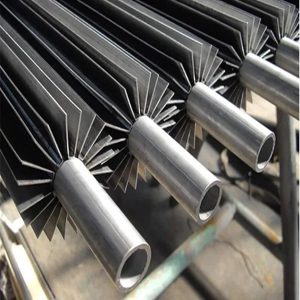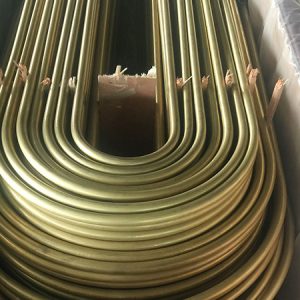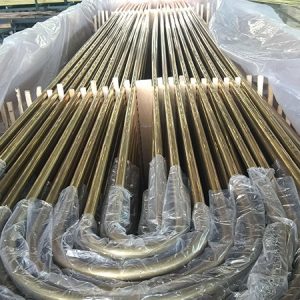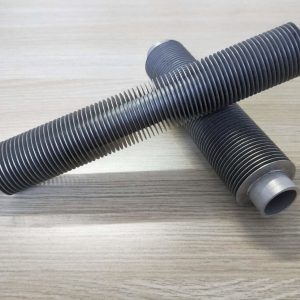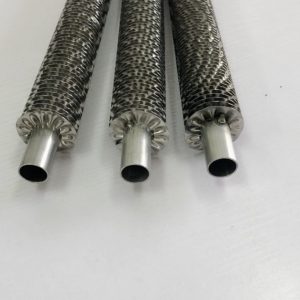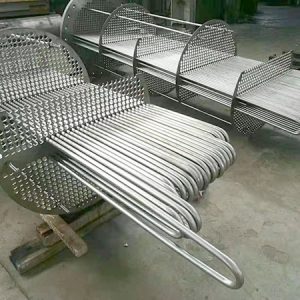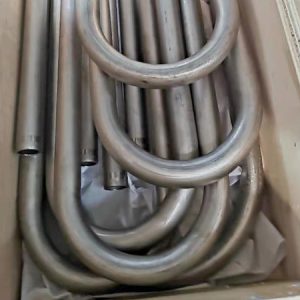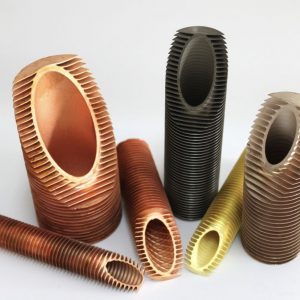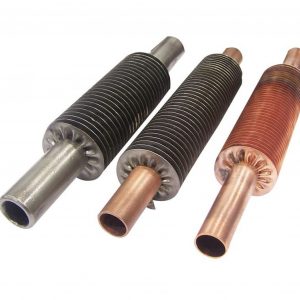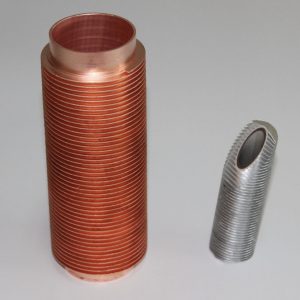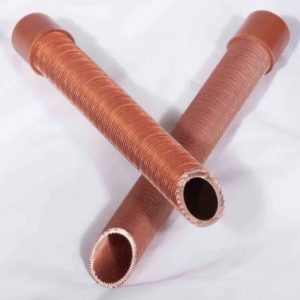Sømløst finnerør
Et finnerør er et rør, der har små finner omkring ydersiden.
Disse finner fungerer som et filter og en mekanisme til at overføre varme fra materialet inde i røret til det udvendige rum eller omvendt. Finrør bruges i applikationer, der kræver overførsel af varme fra en varm væske til en koldere væske gennem rørets væg.
Grand tilbyder en bred vifte af finnerør(kulstof, Rustfrit,kobber,aluminium,titan,osv;) bruges i varmevekslere (luft, vand og kemisk afkølet)til forskellige industrier såsom olie, Petrokemiske, stål, elproduktion og mange flere.
- Beskrivelse: __________
- Detailed information
- Why use finned tubes?
- Undersøgelse

Reference til finnerør
Finner af kulstofstål fås på kulstof, rustfrit stål, eller kobberrør. Ring venligst for en bestemt størrelse, hvis den ikke er angivet

| Slags | Beskrivelse: __________ | Underrør O.D. (Mm) |
Fin specifikation (Mm) | ||
|---|---|---|---|---|---|
| Finneplads | Finnehøjde | Fin tyk | |||
| Integreret | G-type finne tueb | 16-63 | 2.1-5 | <17 | ~0.4 |
| Ekstruderet | Enkelt metal kombineret metal | 8-51 | 1.6-10 | <17 | 0.2-0.4 |
| Lavt finnerør t-type finnerør | 10-38 | 0.6-2 | <1.6 | ~0.3 | |
| Bambusrør bølgepap | 16-51 | 8-30 | <2.5 | / | |
| Sår | L/KL/LL TYPE FINNERØR | 16-63 | 2.1-5 | <17 | ~0.4 |
| Streng | Strengfinnerør | 25-38 | 2.1-3.5 | <20 | 0.2-0.5 |
| U-type | U-type rør | 16-38 | / | / | / |
| Svejsning | HF-svejsefinnerør | 16-219 | 3-25 | 5-30 | 0.8-3 |
| Finnrør af H/HH-typen | 25-63 | 8-30 | <200 | 1.5-3.5 | |
| Piget finnerør | 25-219 | 8-30 | 5-35 | φ5-20 | |
I henhold til brugernes behov, Vi kan producere alle former for stålbånd vikling finned rør og stål aluminium komposit finned rør.
Materialer
Finner af kulstofstål fås på kulstof, rustfrit stål, eller kobberrør. Ring venligst for en bestemt størrelse, hvis den ikke er angivet

Vi tilbyder dig en bred portefølje af materialer og kan til enhver tid udvide vores sortiment for at imødekomme dine specifikke behov vedrørende varmeledningsevne, mekaniske egenskaber, eller korrosionsbestandighed.
- Underrør: Kulstofstål, Rustfrit stål, Kobber, Cupro nikkel, Aluminium, Legeret stål
- Finne: Kulstofstål, Rustfrit stål, Kobber, Aluminium
- Ringe: Kulstofstål, Aluminium, Varmgalvanisering
Why use finned tubes?
Finned tubes are used in applications involving the transfer of heat from a hot fluid to a colder fluid through a tube wall. The rate at which such heat transfer can occur depends on three factors: (1) the temperature difference between the two fluids; (2) the heat transfer coefficient between each of the fluids and the tube wall; og (3) the surface area to which each fluid is exposed. In the case of a bare (unfinned) tubes, where the outside surface area is not significantly greater than the inside surface area, the fluid with the lowest heat transfer coefficient will dictate the overall heat transfer rate. When the heat transfer coefficient of the fluid inside the tube is several times larger than that of fluid outside the tube (for example steam inside and oil outside), the overall heat transfer rate can be greatly improved by increasing the outside surface of the tube. In mathematical terms, the product of heat transfer coefficient for the outside fluid multiplied by the outside surface area is made to more closely match the product of the inside fluid heat transfer coefficient multiplied by the inside surface area.
So the whole concept of finned tubes is to increase the outside surface area of the tube. As an example, a finned tube configuration of 2” (nominal, 2.375” actual) pipe with a ¾” high welded helical solid fin of 12 gauge thickness with 6 fins per inch has an outside surface area of 8.23 sq. ft. per linear foot; whereas the same bare pipe has an outside surface area of only .62 sq. ft. per linear foot. That is a 13X increase in outside surface area. See Design Information for extensive tables of surface areas and fin weights.
“The whole concept of finned tubes is to increase the outside surface area of the tube.”
“In many cases, one finned tube replaces six or more bare tubes at less than 1/3 the cost and 1/4 the volume.”
By increasing the outside surface area of the tube, the overall heat transfer rate is increased, thereby reducing the total number of tubes required for a given application. This reduces the overall equipment size and the cost of the project. In many cases, one finned tube replaces six or more bare tubes at less than 1/3 the cost and ¼ the volume.

